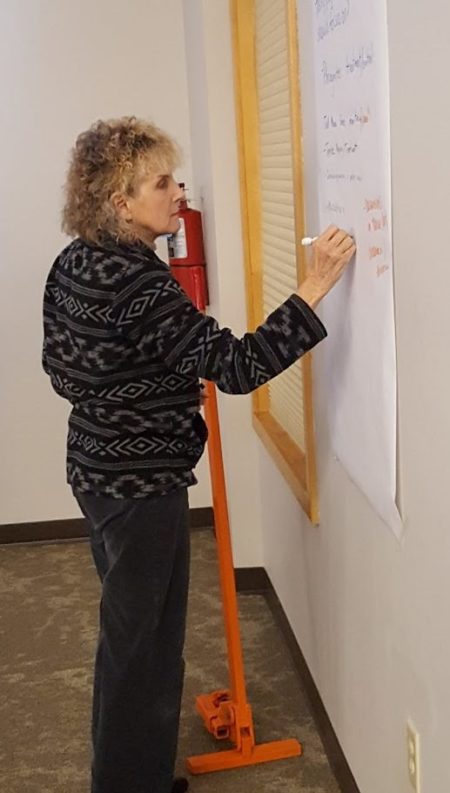New group builds partnership to fight tough weeds
Watch out invasive weeds, there’s a new posse in town.
About 30 people gathered at Mosquito Hill Nature Center in New London Dec. 12 for the organizational meeting to create a Fox Valley Cooperative Invasive Management Area (CISMA). The crowd included foresters, woodlot owners, nature center staff members, conservation advisors, DNR employees and gardeners.
 The meeting was supported by grants of $1,500 from the Waupaca Area Community Foundation and $2,000 from the Environmental Stewardship Fund within the Community Foundation to the Stevens Point-based Golden Sands Resource Conservation and Development Council. Its goals included drawing 15 people to the Mosquito Hill meeting.
The meeting was supported by grants of $1,500 from the Waupaca Area Community Foundation and $2,000 from the Environmental Stewardship Fund within the Community Foundation to the Stevens Point-based Golden Sands Resource Conservation and Development Council. Its goals included drawing 15 people to the Mosquito Hill meeting.

Invasives are plants typically brought in from other areas that, lacking their normal competition, take over a landscape. A CISMA coordinates efforts over several counties to knock back the invasives. The counties in the Fox Valley CISMA would include Outagamie, Waupaca, Winnebago and Brown. Some of the more troubling invasive plants there include buckthorn, spotted knapweed, autumn olive and the tall, fuzzy-topped grass phragmites that’s common in the ditches around Green Bay.
Participants were asked to brainstorm answers to four questions posted on the walls around the room asking about the potential projects, barriers, likely partners and what the group’s name should be. The group settled on North East Wisconsin Invasive Species Coalition (NEWISC) for the name. They suggested more than 20 potential partners and listed potential barriers as lack of funding, difficulty of coordination with outside parties and coordination within the group, deciding which projects to prioritize, deciding which treatment methods to employ, and issues resulting from climate change.
“It’ll be important to keep these potential problems in mind as we continue to build the group,” Plonsky said.
Priority projects the group suggested included monitoring and controlling phragmites, Japanese knotweed, purple loosestrife, buckthorn and Japanese barberry. They also recommended outreach and training for highway department workers in how to avoid spreading seeds from invasive plants while mowing highway shoulders and training for landowners.
NEWISC becomes Wisconsin’s 14th CISMA. Only 15 of the state’s 72 counties currently are not covered by a CISMA.
The Environmental Stewardship Fund was established in 2003 to support local projects that help people preserve, enjoy or understand nature better, by furthering the preservation or protection of nature, enhancing the enjoyment of nature and improving public knowledge and awareness of the natural world.



Leave a Comment